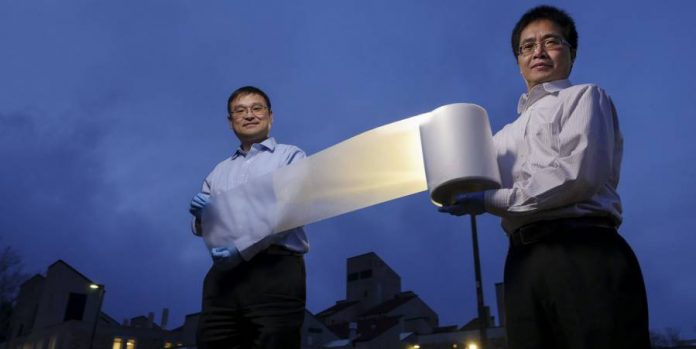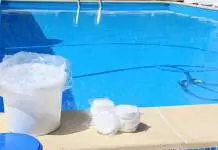
A team of researchers led by Xiaobo Yin, a materials scientist at the University of Colorado, have created a plastic film capable of freezing every object it touches down to a temperature of 10 C°.
The group did so by working upon Shanhui Fan’s previous study, which produced a similar film in early 2014.
However, Fan could not find a way to make it fit for mass production, something that Yin and his team have now achieved.
This new material could have a wide number of applications. From commercial uses, like a way of providing some cool shade during sunny days, to industrial applications like solar panels, which work better at lower temperatures.
How did they create this freezing plastic?
Yin’s team of researchers started with a transparent plastic called polymethylpentene, which they fashioned into 3 cm wide plastic sheets, and later combined with an even thinner layer of silver.
The resulting film reflected most of the light that hit it and only absorbed about 4% of incoming photons. As a result, objects surrounded by the enhanced plastic became cooler once covered with it.
This phenomenon happens because the researchers embedded the film with very tiny glass spheres that produce an effect called ‘passive cooling.’ The glass beads on the paper create infrared energy, which is what helps objects cool down after they receive heat from the sun.
At the same time, the mirror-like layer of silver helps reflect almost all of light it receives which, combined with the ‘passive cooling’ effect, brings down the temperature of any object below the sheet of plastic.
Commercial applications for this new material
The plastic sheet from Yin’s experiment is not only useful but incredibly cheap to produce. They calculated that a single square meter of the film would cost between $0.25 and $0.50.
The thin layer of plastic has lots of applications that industrial and commercial institutions could start seizing in the coming years. Yin’s team said they were already working on the way to produce chill water with this material.
If they came up with a prototype, they could sell it to power plants, for example. Electricity generating facilities often use water, and colder temperatures allow for more energy production, just like in solar panels.
“This is very nice work demonstrating a pathway toward large-scale applications of the concept of radiative cooling,” said Fan, who did not collaborate on the project.
The electrical engineer from Palo Alto, California, had already produced a similar plastic prototype that could freeze objects down to 5 C°. However, the technology he required to make it work proved costly and unavailable for mass production.
Source: Science











